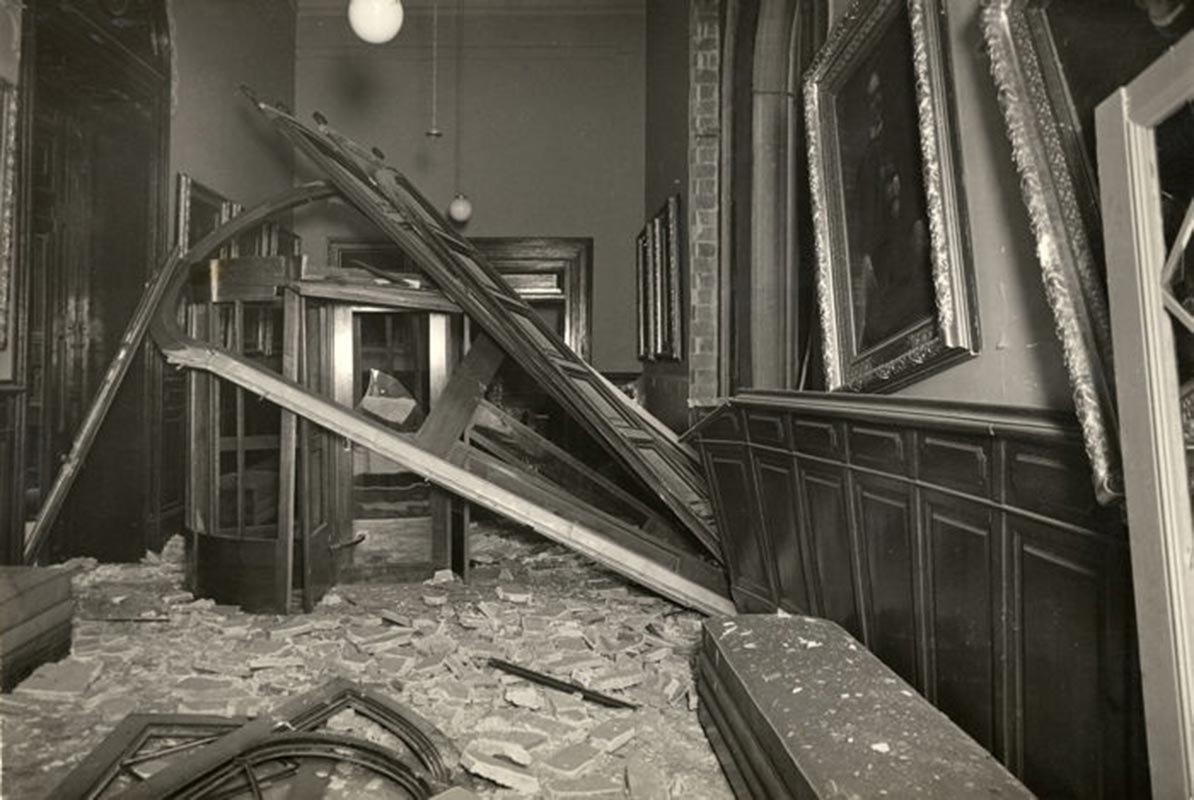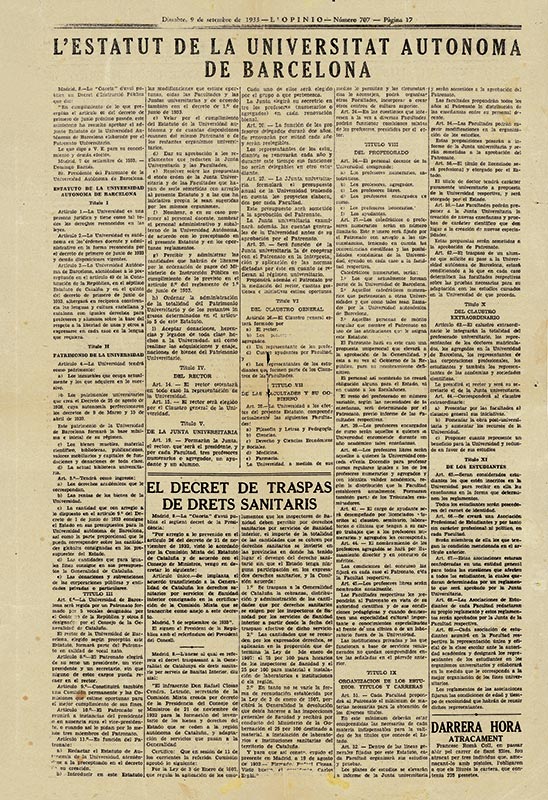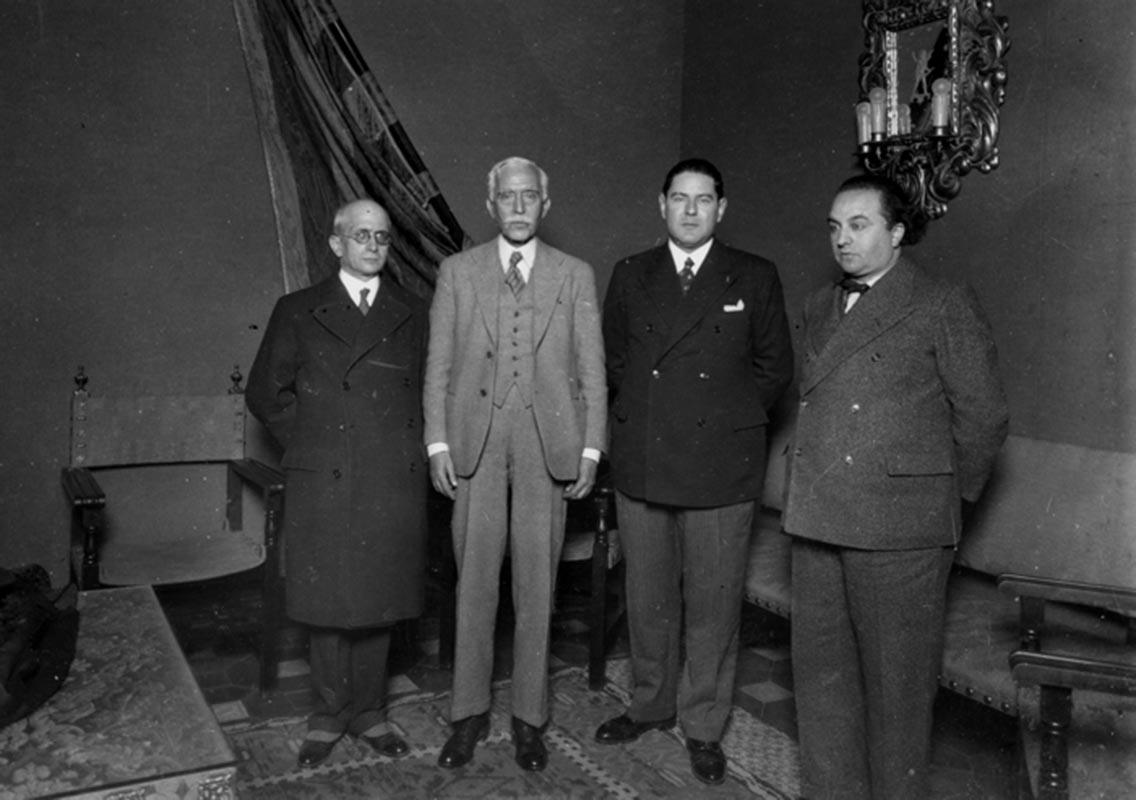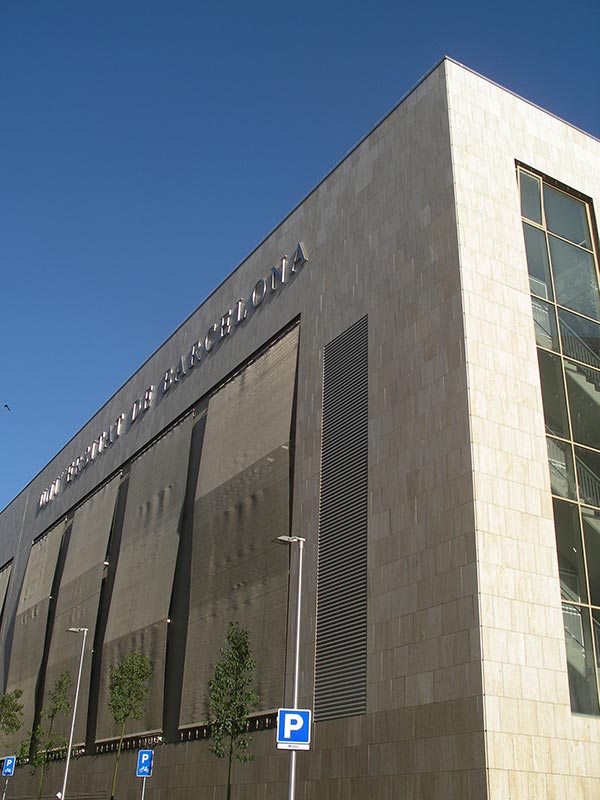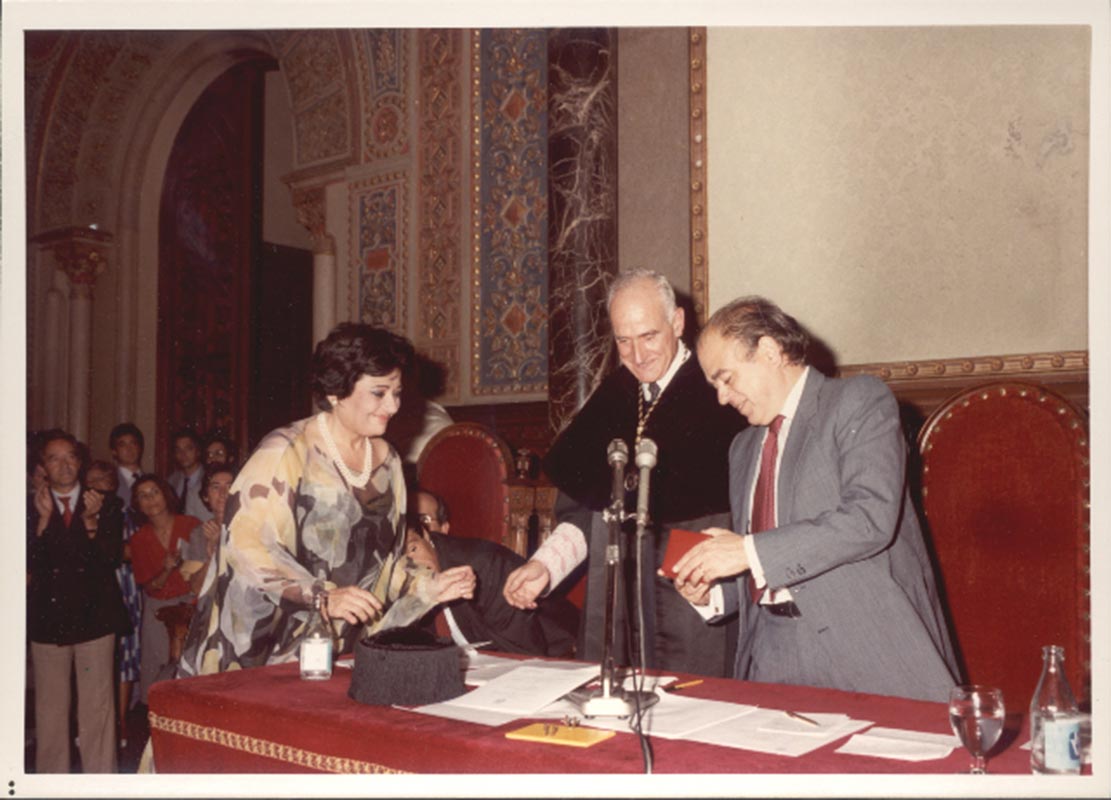
The twentieth century
Following a considerable boost from important initiatives such as the 1st Catalan University Congress (1903-1904), the Catalan University Studies (1906) and the 2nd Catalan University Congress (1918), we must look for the first important milestone in the twentieth-century history of the University of Barcelona in the period leading to the Statute of Autonomy of the University of Barcelona (first the Statute of Autonomy of the Faculty of Philosophy and Arts in 1931, and the approval of the Statute of Autonomy of the University of Barcelona in September 1933). During the period when the University of Barcelona enjoyed its Statute of Autonomy (with Pere Bosch Gimpera as Rector between 1933 and 1939), the institution was governed by a board made up of representatives of the Government of the Republic, the Government of Catalonia and the University Senate.
More information
The Civil War and the regime that followed it represented the beginning of a period of repression (purge of the university teaching staff, suppression of university autonomy, elimination of the Catalan language and culture from academic life), when the university was forced to go along with the ideology of the regime.
Alongside but also despite this ideological indoctrination, actions undertaken against the regime by civil society in general and the university in particular should be highlighted. For example, there were initiatives to protect and spread the Catalan language and culture, the establishment of the University of Barcelona Democratic Union of Students (SDEUB) — whose best-known act of protest was the Caputxinada of March 1966 — or the occupation of the University Rector's Office by students in January 1969, when a Spanish flag and bust of General Franco were thrown out of the window.
As for facilities, it must be said that during all these years the natural growth of the University demanded intensive building activity. It was in this context that the Pedralbes university district emerged. This began to take shape over a long process, beginning in 1952. The first building constructed in this area was the Faculty of Pharmacy (1957), which still preserves one of the access gates to the Güell Estate, designed by Antoni Gaudí. We would particularly like to mention the Faculty of Law building (1958), the work of the architects Giráldez, López Íñigo and Subias, which is the fundamental work of the renewal of rationalism in Barcelona.
The Pedralbes university district was completed with the Faculty of Fine Arts (1960), the building of the former University School of Business Studies (1961), the building of the former Faculty of Economic Sciences (1967-1968), the faculties of Physics and Chemistry (1969), the old faculties of Psychology and Education (1970), the building which until 2006 housed the faculties of Philosophy and of Geography and History (1970), the Faculty of Biology (1975), and, most recently, the Faculty of Geology (1985-1986).
The education the UB began to provide after 1982 on the Bellvitge Health Sciences campus, linked to the Bellvitge University Hospital and the Duran i Reynals Hospital, should also be highlighted. Courses in Nursing, Medicine, Dentistry and Podiatry are taught on this campus.
Finally, the adaptation of the Mundet campus (Teacher Training, Education and Psychology studies) during the nineties must not be left without a mention, together with the building for the faculties of Philosophy and of Geography and History, opened in the Raval district in 2006.
The consolidation of the University of Barcelona as a democratic, independent institution began in 1977 and continued throughout the period of the Spanish transition to democracy. The election of Dr. Antoni Maria Badia Margarit as Rector of the University of Barcelona on 15 December 1977 marked the beginning of a period of normalization, modernization and democratization, culminating in February 1985 with the approval by the University Senate of the new Statutes of the UB. With the Statutes of 1985, the system of university independence the institution had enjoyed during the Second Republic was re-established.
Following the Statutes of the University of Barcelona of 1997, the current Statute, approved in 2003, reinforces the role of the faculties and schools at the heart of university activity and attempts to strengthen the University's research potential as far as possible.
In this context, our University has begun a set of actions aimed at meeting the current and future needs of Catalan society, including, most importantly, adapting its courses to the European Higher Education Area; the encouragement of lifelong learning; the internationalization of its activity; the deepening of links with the production sector; the modernization of management and planning systems, and the spread of the use of information technologies.

